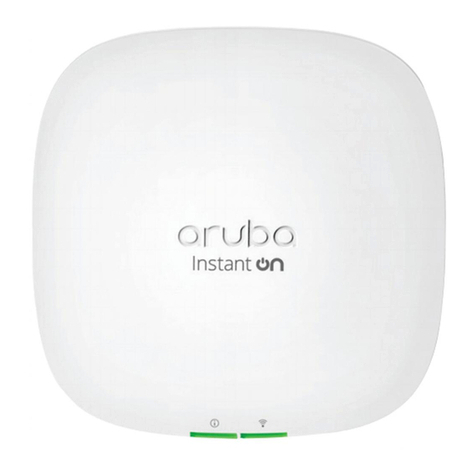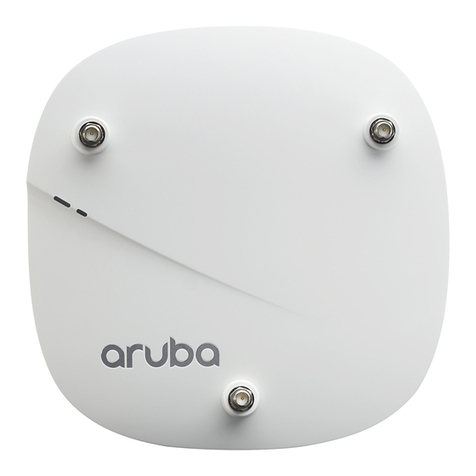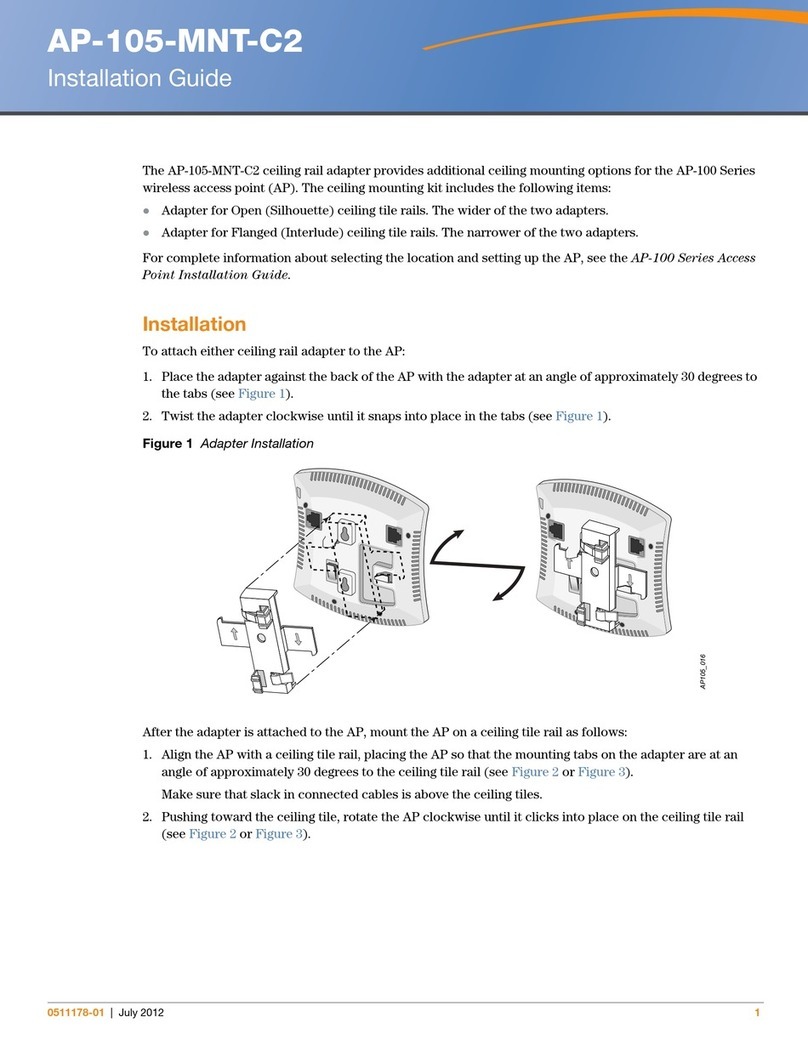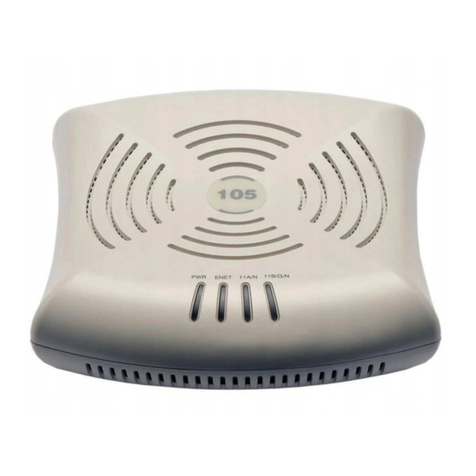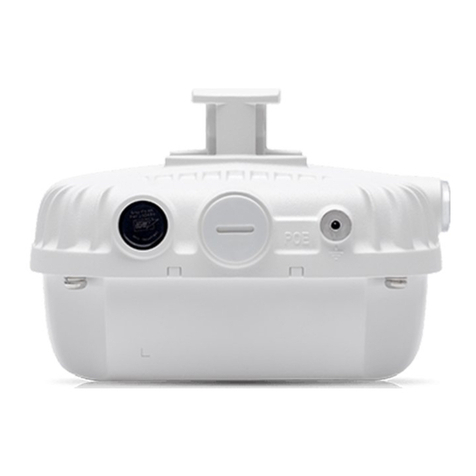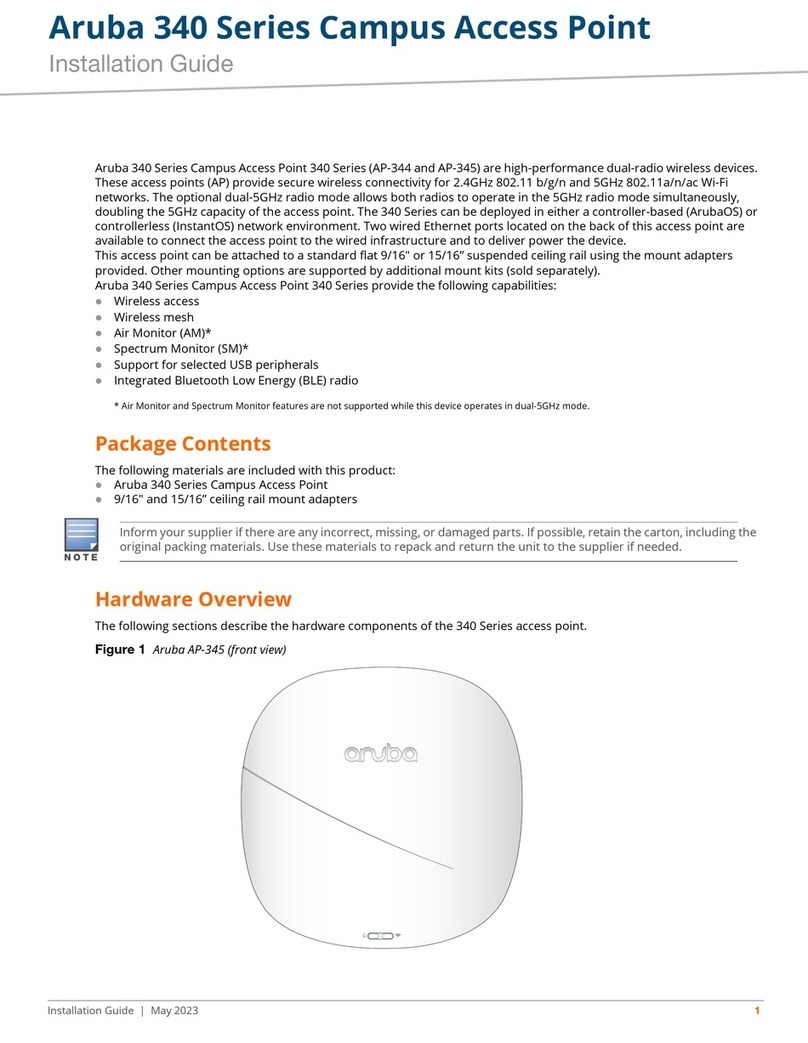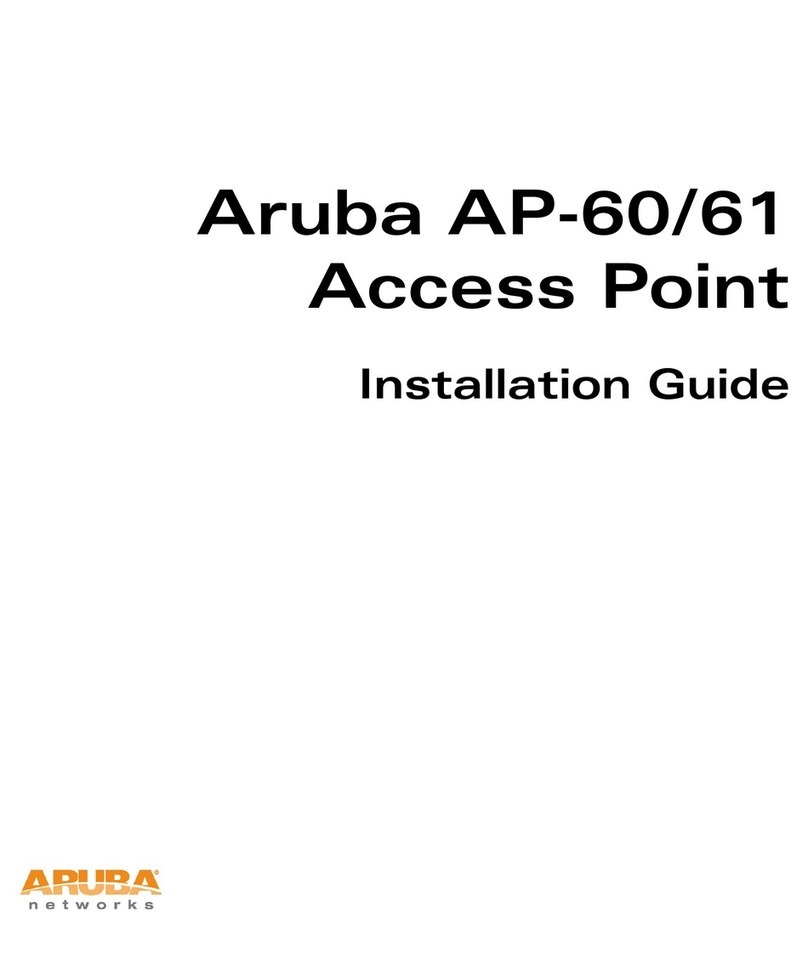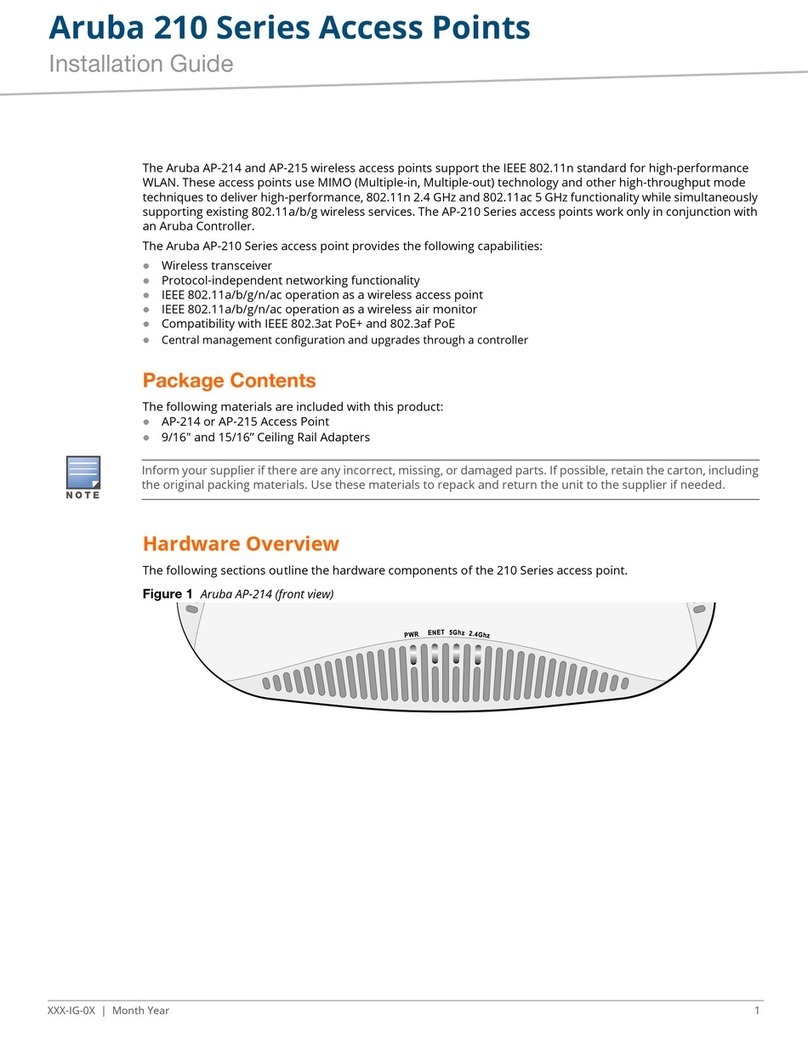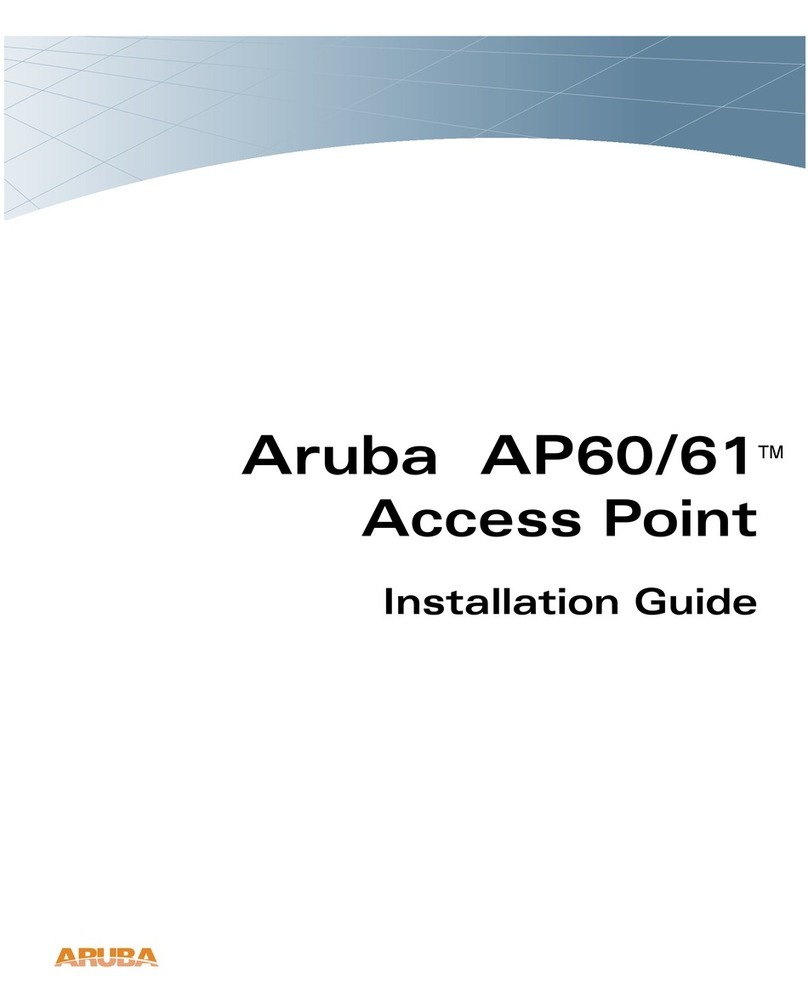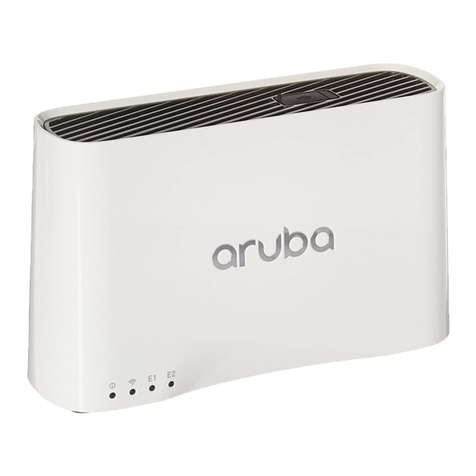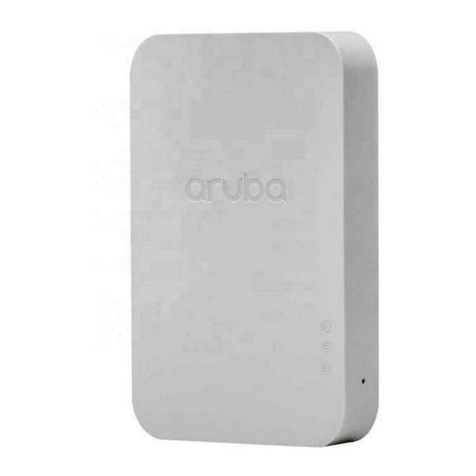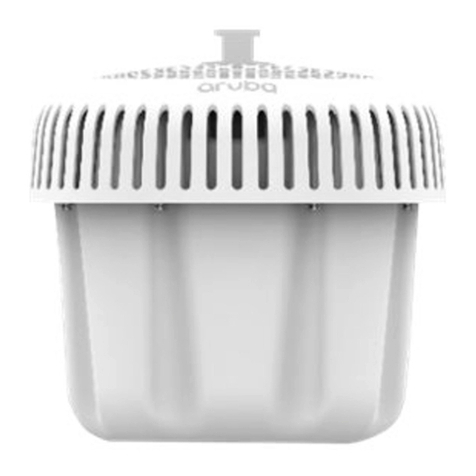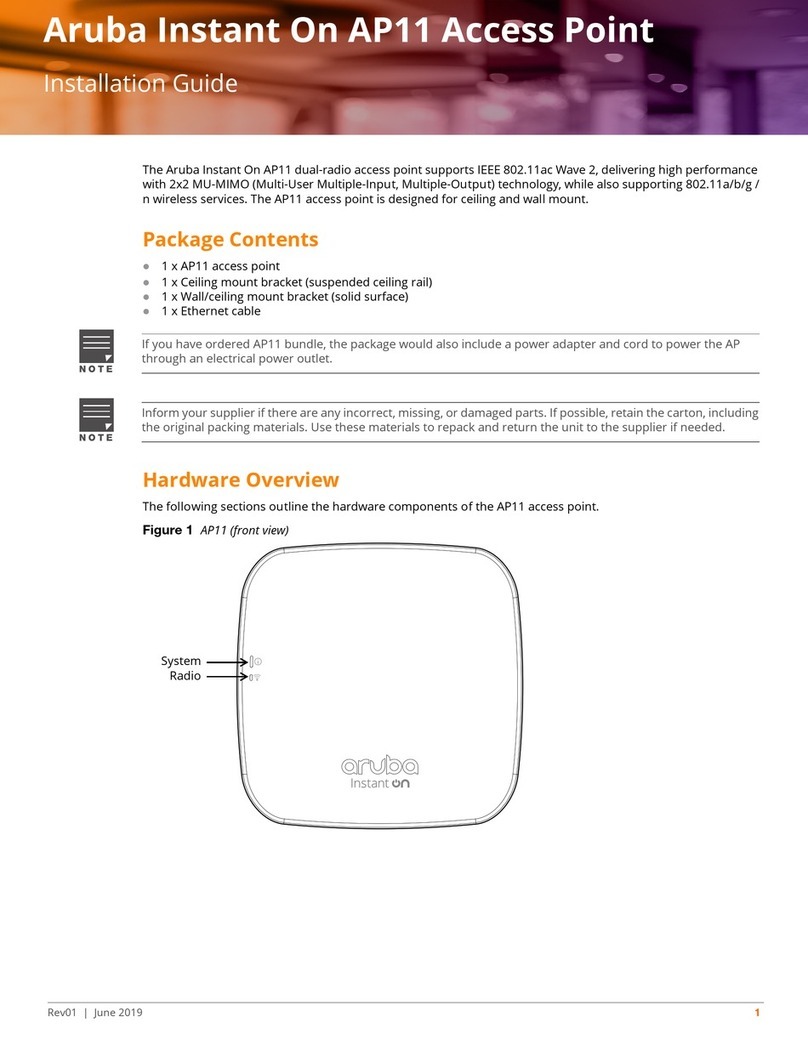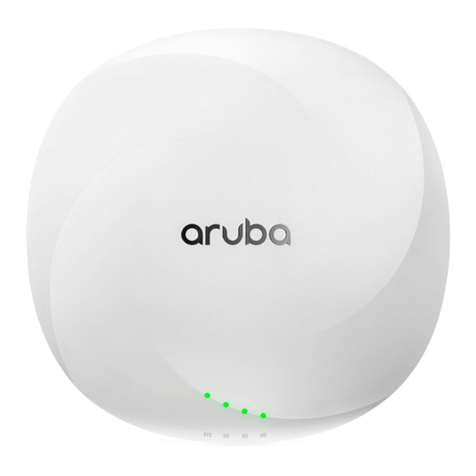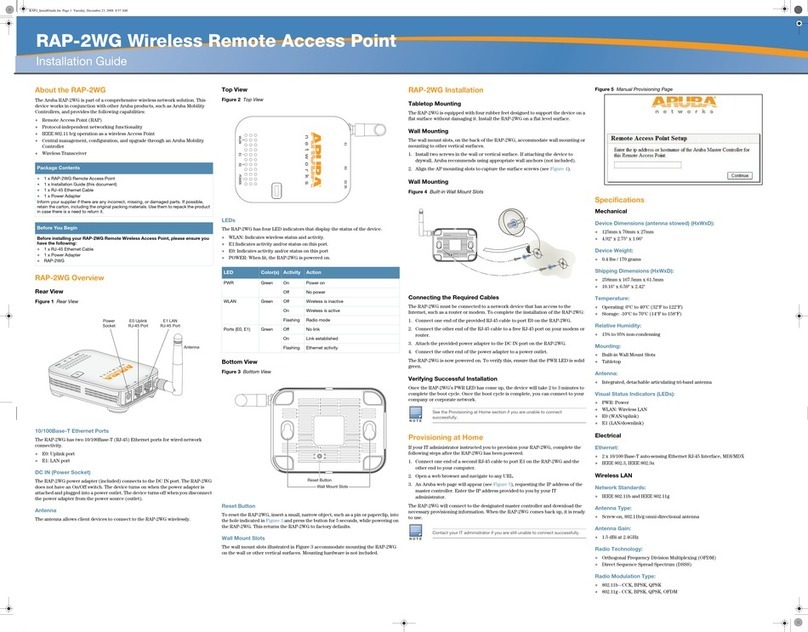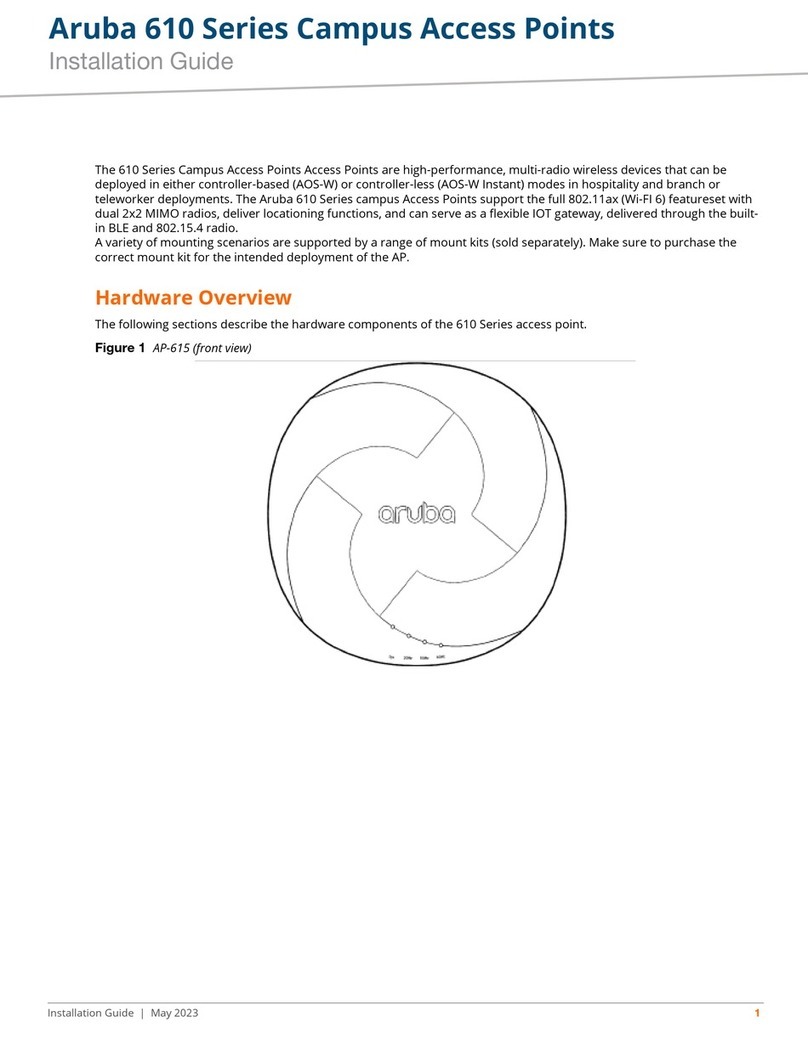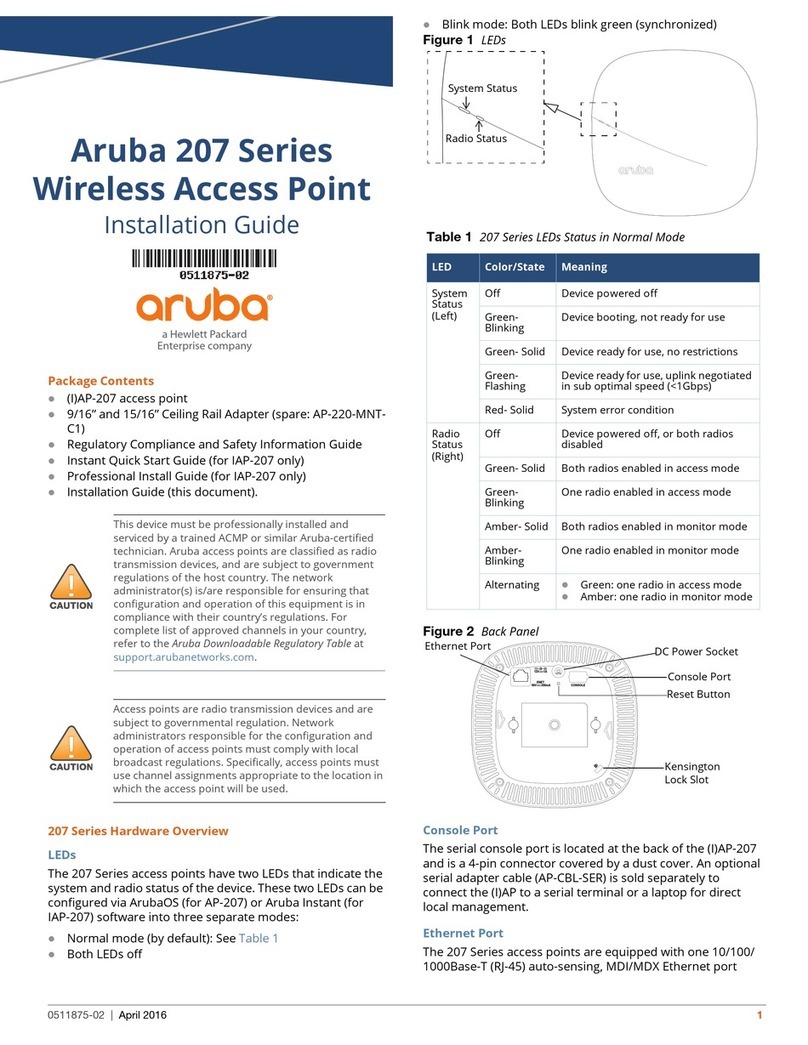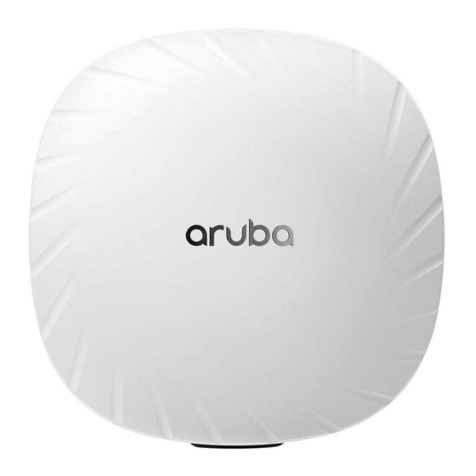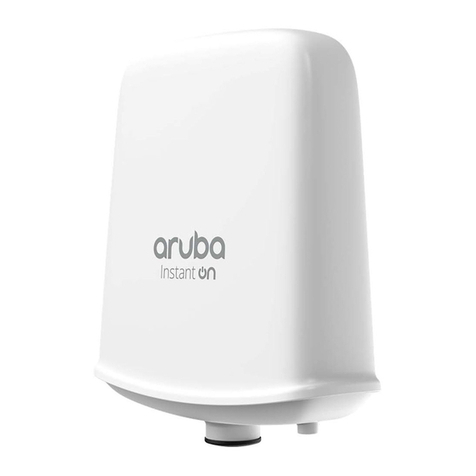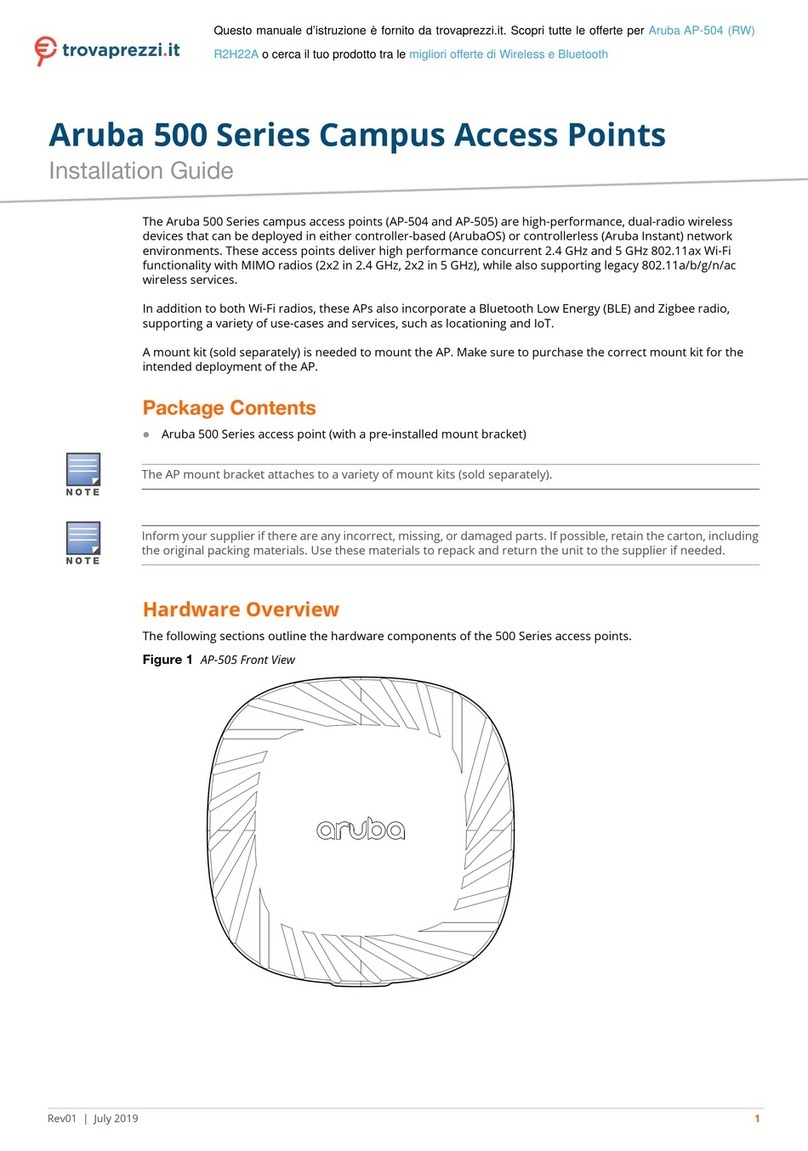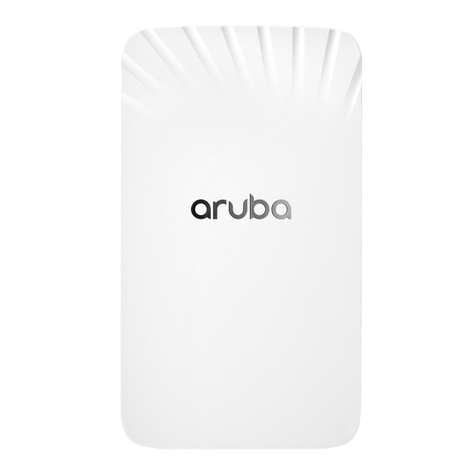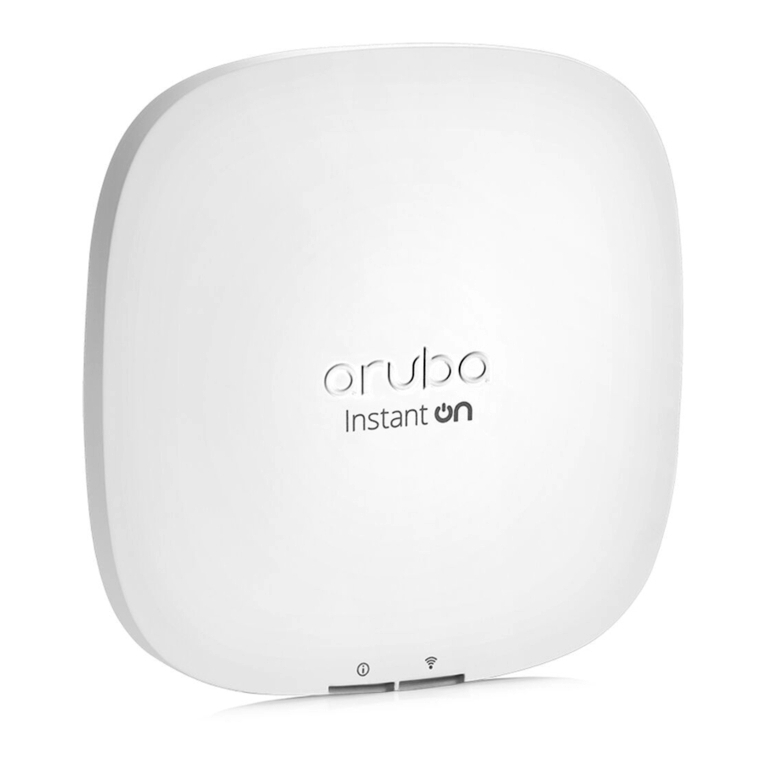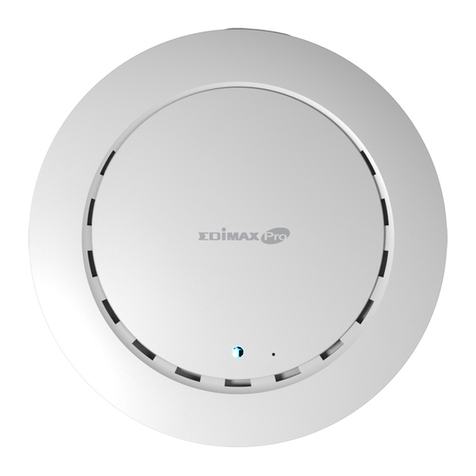
4Aruba 560EX Series Hazardous Location Access Points | Installation Guide
Reset the AP while powering up
1. Press and hold down the reset button using a small, narrow object such as a paper clip while the access point
is not powered on via PoE.
2. Connect the power supply (PoE) to the access point while the reset button is being held down.
3. Release the reset button on the access point after 15 seconds.
To turn off/on the LED display, press and release the reset button using a small, narrow object, such as a
paperclip for less than 10 seconds during normal operation of the access point.
Before You Begin
Refer to the sections below before beginning the installation process.
Pre-Installation Checklist
Before installing your access point, be sure that you have the following:
Cat5E or better UTP cable with network access
A compatible PoE injector with power cord
One of the following network services:
Aruba Discovery Protocol (ADP)
DNS server with an “A” record
DHCP Server with vendor specific options
Outdoor Planning and Deployment Considerations
Prior to deploying an outdoor wireless network, the environment must be evaluated to plan for a successful
WLAN deployment. Successfully evaluating the environment enables the proper selection of routers and
antennas and assists in the determination of their placement for optimal RF coverage. This process is considered
WLAN or RF planning and Aruba’s system engineers can assist in the outdoor planning process.
Identifying Specific Installation Locations
Use the access point placement map generated by Aruba RF Plan software application to determine the proper
installation location(s). Each location should be as close as possible to the center of the intended coverage area
and should be free from obstructions or obvious sources of interference. These RF absorbers/reflectors/
interference sources will impact RF propagation and should be accounted for during the planning phase and
FCC Statement: Improper termination of access points installed in the United States configured to non-US
model controllers will be in violation of the FCC grant of equipment authorization. Any such willful or
intentional violation may result in a requirement by the FCC for immediate termination of operation and may
be subject to forfeiture (47 CFR 1.80).
Aruba, in compliance with governmental requirements, has designed the 560EX Series access points so that
only authorized network administrators can change configuration settings. For more information about AP
configuration, refer to the AP Software Quick Start Guide.
Access points are radio transmission devices and as such are subject to governmental regulation. Network
administrators responsible for the configuration and operation of access points must comply with local
broadcast regulations. Specifically, access points must use channel assignments appropriate to the location in
which the access point will be used.
The rules for the 5600-5650 MHz band vary by region.
